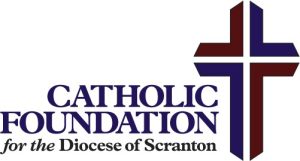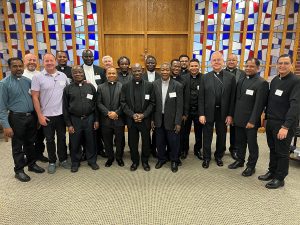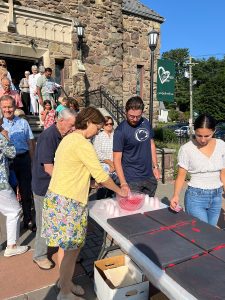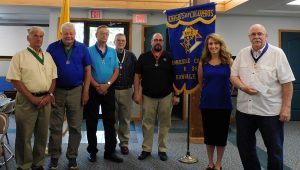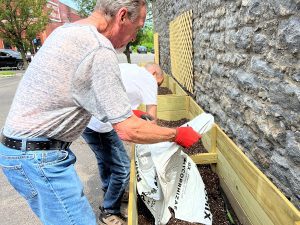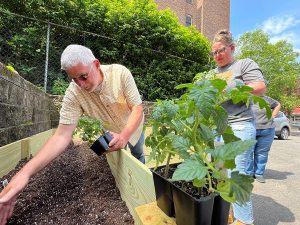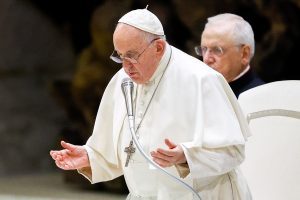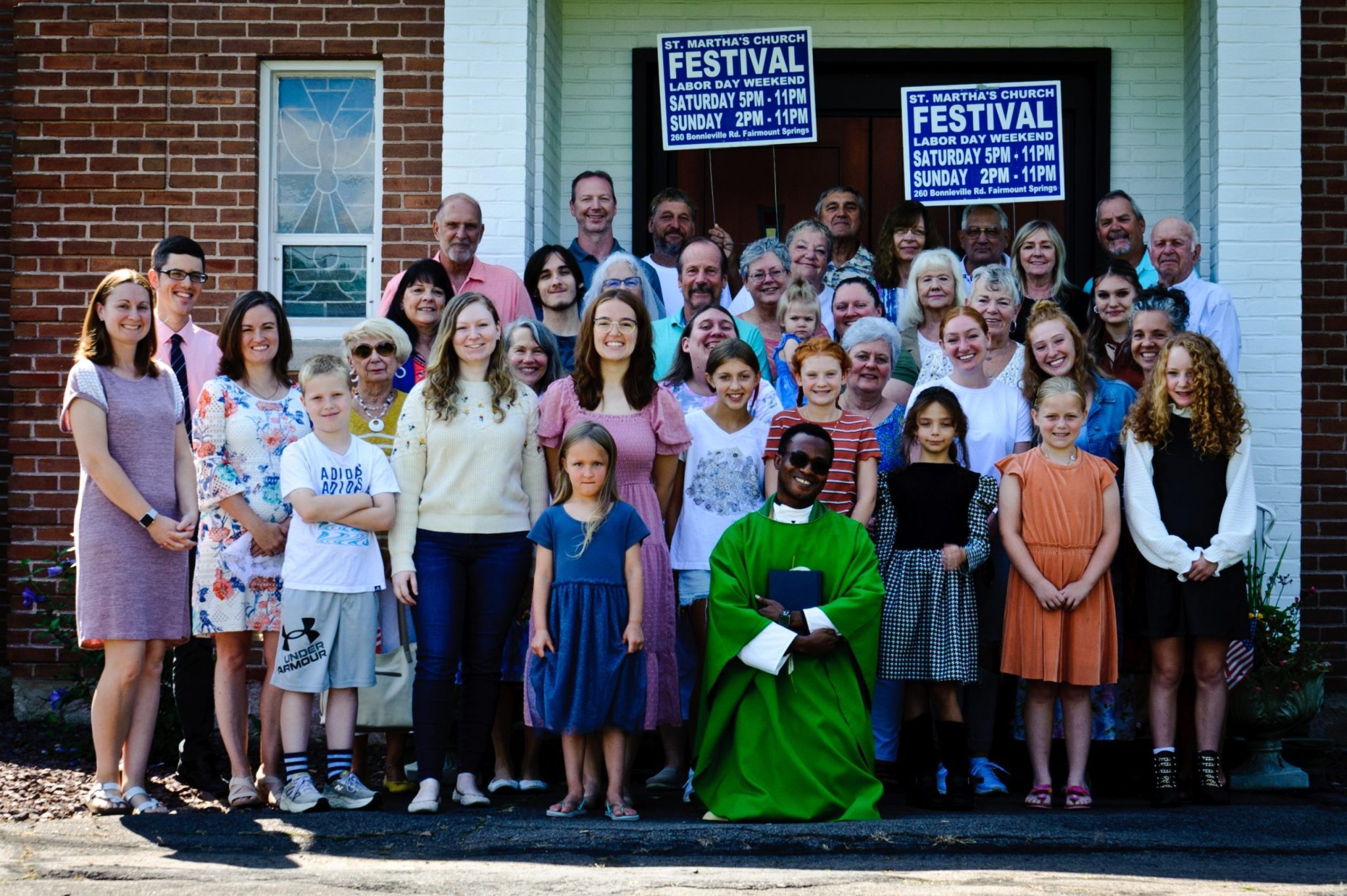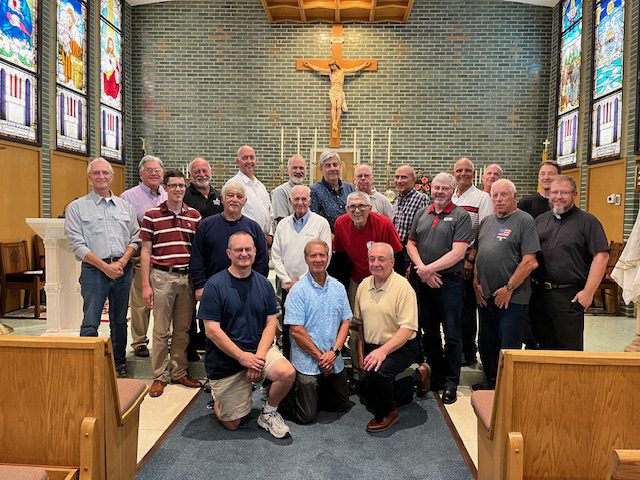CARBONDALE – With the start of school just a few days away, Catholic Social Services of the Diocese of Scranton hosted a backpack and school supplies giveaway that benefited 102 children.
The event, held Aug. 9 in the basement of Saint Rose of Lima Church, was filled with excitement as families arrived to find an array of backpacks filled with essential supplies. From crayons and notebooks to pencils and folders, every item will help students start their academic year with confidence.

backpacks to children and families in need in Carbondale on Aug. 9,
2024, at Saint Rose of Lima Church. Participating in the distribution
were, from right: Dominique Jordan, Supervisor of the CSS Carbondale
Office; Jolette Lyons, CSS Director of Relief Services; Richard Ward,
CSS volunteer; Cindy Bethea, CSS volunteer; and Jessica Bruno, CSS
volunteer. (Photo/Eric Deabill)
“We always try to look to see what we can do to help the community. We love this community and we’re invested in this community,” Jolette Lyons, Director of Relief Services for Catholic Social Services, said. “Every kid should be excited to go back to school and sometimes families struggle with getting supplies to go back.”
This is the first year that Catholic Social Services organized the back-to-school giveaway in Carbondale.
Staff members say it became a priority after listening to the parents that they serve in their local food pantry.
“One of the women that comes in has six children and she said she was going to have a really hard time getting school supplies this year and I think that is what really rushed us to do something this year,” Dominique Jordan, Catholic Social Services Carbondale Office Supervisor, explained.
Each backpack was tailored to the needs and grade level of the child. A total of 69 backpacks for young children, filled with a notebook, crayons, scissors, glue, ruler, pencils, and folder, were meticulously put together. More than 30 other backpacks, all for older students, contained three notebooks, three folders, pens, pencils, and highlighters.
The giveaway was made possible through the generous contributions of local churches and community members.
“Our Lady of the Rosary Parish did a collection for us through the month of July. Everyone who could brought in bookbags and all the supplies. They collected a good amount for us,” Jordan said.
“Lighthouse Christian Ministry and local families and volunteers also dropped items off. It has been great,” Lyons added.
The impact of the event extended far beyond just providing supplies. For many families, the giveaway offered a sense of relief and support as they prepare for the new school year. With the rising costs of education-related items, Catholic Social Services provided not only tangible help, but also a reminder of the strength and unity within the whole Carbondale community.
“Parents want their kids to be excited to go to school. They want to give their kids the best things, so if we can help them, we feel privileged to be able to do that,” Lyons said.
For more information on how to get involved with Catholic Social Services in Carbondale or to support future initiatives visit dioceseofscranton.org or contact their office at (570) 282-0460.

